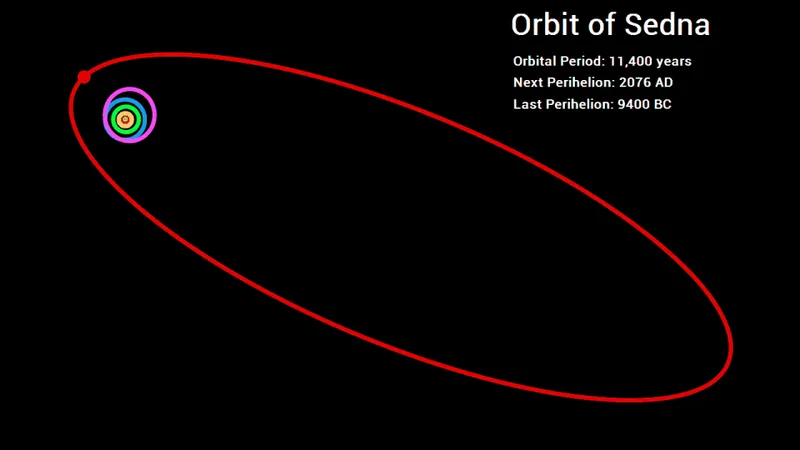Ninth Planet? This Time Scientists Might Have Strong Proof
The search for Planet 9, a hidden planet believed to lurk in the outskirts of our solar system, has long intrigued scientists. Let's do a "Lift-off" and travel to this mysterious hidden planet.
This mysterious planet thought to be ten times more massive than Earth and orbiting the Sun at a distance of 400 to 800 Astronomical Units (AU), has eluded detection despite years of dedicated research. However, recent findings have provided the strongest statistical evidence yet for the existence of Planet 9, bringing us closer to uncovering this cosmic enigma.
The Hunt for a Hidden Planet
The possibility of an unseen planet beyond Neptune was first suggested shortly after the discovery of Uranus in 1781. Astronomers noticed abnormalities in Uranus's orbit, prompting the hypothesis that an unseen force was influencing its path. In the 1840s, mathematicians Urbain Le Verrier and John Couch Adams independently used complex calculations to predict the location of this hidden planet. Their predictions led to the discovery of Neptune in 1846, marking a triumph for mathematical astronomy.
Despite this success, anomalies in Neptune's orbit suggested the presence of another unseen planet. This led to the discovery of Pluto in 1930 by Clyde Tombaugh. However, Pluto's mass was insufficient to account for the gravitational anomalies, indicating that a more massive object might be lurking even farther out.
The Kuiper Belt and Beyond
In 1951, Gerard Kuiper proposed the existence of a belt of icy objects beyond Neptune, known as the Kuiper Belt. The discovery of Kuiper Belt Objects (KBOs) in the 1990s confirmed this theory, but the search for a more massive object continued. The discovery of Sedna in 2003, with its extraordinarily elongated orbit, added to the intrigue. Sedna's orbit suggested that it might have been influenced by a massive, unseen object.

Further discoveries, such as Eris in 2005 and other extreme Trans-Neptunian Objects (ETNOs), reinforced the idea that a distant, undiscovered planet might be shaping the orbits of these objects. These ETNOs exhibited unusual clustering in their orbits, hinting at the gravitational influence of a large, hidden planet.
Statistical Evidence for Planet 9
In January 2016, astronomers Konstantin Batygin and Mike Brown published a paper suggesting that the clustering of ETNOs could be explained by the gravitational influence of a hypothetical Planet 9. This planet, they proposed, would be about ten times the mass of Earth and orbit the Sun at a distance of 400 to 800 AU.
To test this hypothesis, researchers used advanced computer simulations to model the orbits of TNOs with and without the influence of Planet 9. The simulations showed that including Planet 9 significantly increased the likelihood of the observed clustering of TNOs. Statistical analysis comparing these simulations with actual space data strongly supported the model including Planet 9, providing compelling evidence for its existence.
Challenges in Detecting Planet 9
Despite the strong statistical evidence, detecting Planet 9 remains a significant challenge. The planet's great distance from the Sun means it receives very little sunlight, making it almost invisible against the backdrop of stars. Its highly elliptical orbit means it could spend most of its time in the darkest regions of its orbit, far from the Sun's illumination.
The vast area of the sky where Planet 9 could be located further complicates detection efforts. Astronomers must meticulously scan large regions of the sky, often rechecking and verifying observations to ensure nothing is missed. Additionally, Planet 9's slow movement across the sky requires prolonged and repeated observations to distinguish it from stationary stars.
The Future of the Search
The upcoming operations of the Vera Rubin Observatory in Chile, equipped with an 8.4-meter telescope capable of conducting nightly all-sky surveys, hold promise for the search for Planet 9. By closely observing the movements of distant TNOs, the observatory aims to detect patterns that could indicate the presence of Planet 9. If these TNOs consistently exhibit patterns of proximity to the Sun beyond about 16 AU, as predicted by the Planet 9 model, it could serve as crucial evidence for the planet's existence.
The search for Planet 9 represents an exciting frontier in our understanding of the solar system. While challenges remain, the strongest statistical evidence yet suggests that this elusive planet may indeed exist, shaping the orbits of distant objects in our solar system. As technology advances and new observatories come online, we may soon have the tools needed to finally uncover Planet 9 and add a new chapter to the story of our cosmic neighborhood.
Edited by Rahul Bansal







